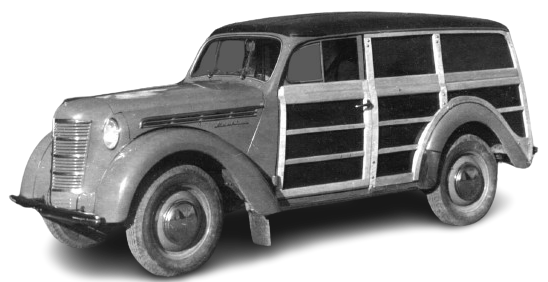Back in 1945, it was planned to produce not only a passenger car, but also a cargo modification of the Moskvich. A metal body was no longer needed due to the high cost of an additional set of stamping equipment and a shortage of steel sheets. But it seemed tempting to build a body with wooden sides and a roof made of artificial leather – similar bodies were popular in the USA and Europe in the 40s. Wood and carpenter's labor were inexpensive back then.
A three-door van for 250 kg of cargo was developed in the second half of 1946. Designers – A. F. Andronov, L. I. Belkin, D. D. Melman, V. F. Tamarin, V. F. Tarasov, S. D. Churazov and others. At the same time, the first model was built, which had significant differences from the German experimental car “Delivery” on the Opel Kadett chassis. At the beginning of 1947, a second, modified model was manufactured; in the same year, an installation batch of 10 vans was released and entered for testing at motor transport enterprises.
The production of vans at MZMA itself was not allowed due to lack of space. The first batches were collected right in the passage of the experimental workshop. Later, MZMA itself built only the chassis with units, the wooden parts were manufactured by plant No. 471 in the city of Shumerlya, and the final assembly was carried out by plant No. 2 KHOZU MVD in Moscow. The chassis went through all the upgrades along with the base sedan, but after the introduction of the engine and chassis of the 401 model, according to the technical conditions (TU), the index 400-422 remained.
The van was taken out of production later than the sedan, in December 1956. 7830 vehicles were produced.
Albums
Completely authentic Moskvich-400-422 cars remained only in photos – wooden elements and heavy use at state companies did not contribute to the durability of their bodies.

